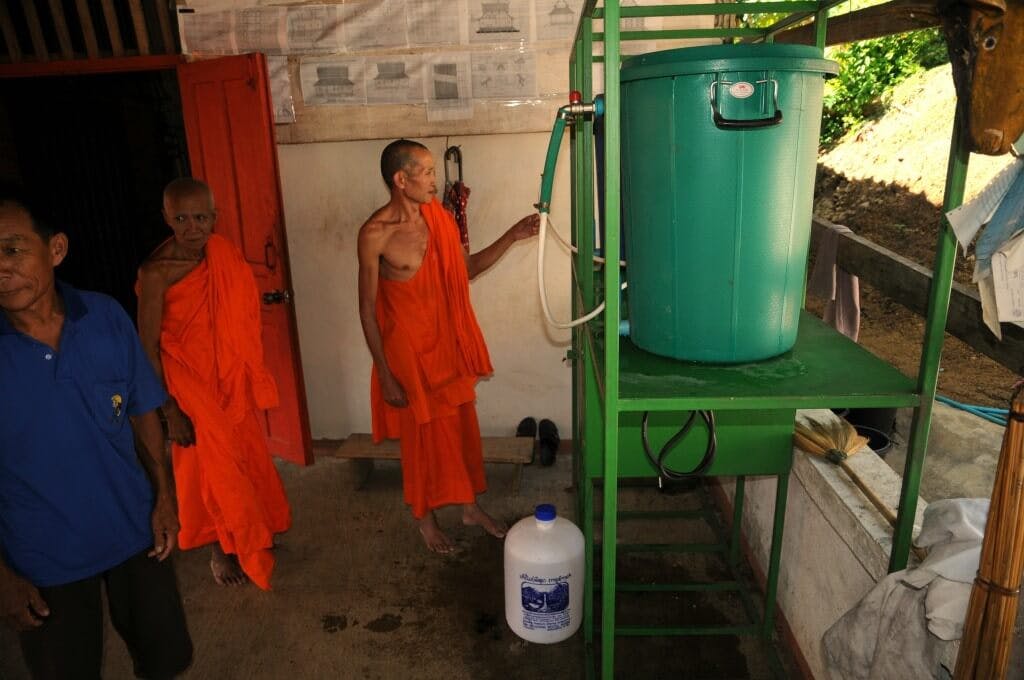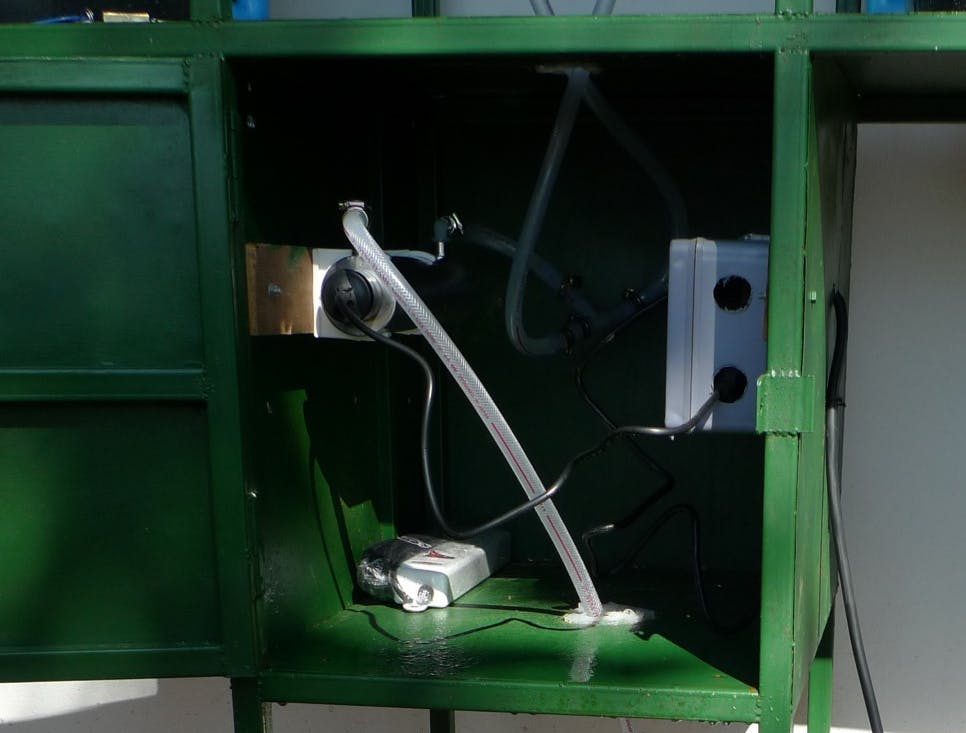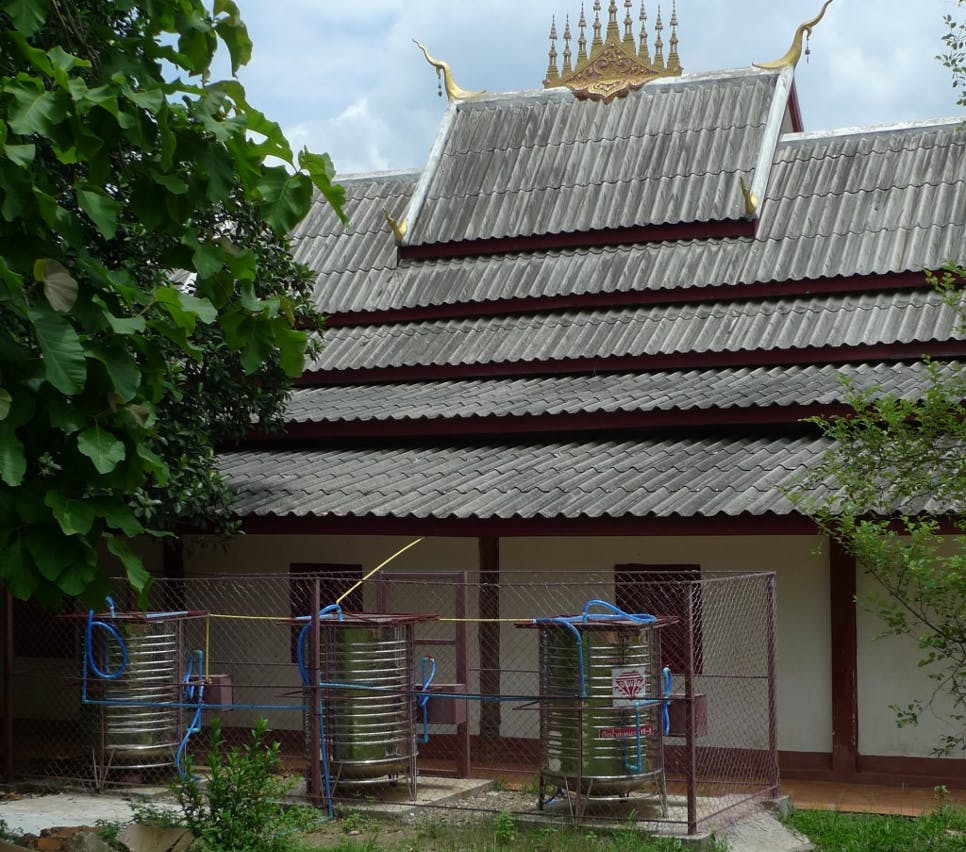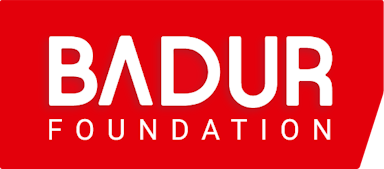Clean drinkable water is one of the most essential elements of life. The Mekong River runs almost the entire length of Laos and is fed by countless tributaries and streams. Yet paradoxically, Laos is one of the countries where access to safe drinking water is extremely difficult.
Although most of the 6.6 million population live within sight of some natural body of water, none of that water is drinkable. There currently are no strict regulations on the treatment of waste water, hence the river waters are continuously contaminated with biological and industrial waste. As the town of Luang Prabang becomes ever more popular as a tourist destination, the waters of the two surrounding rivers are becoming more polluted thereby denying local communities safe drinking water. Working in partnership with the Buddhist Heritage Project and the ERM Foundation, the Foundation’s objective was to introduce a pilot project for a relatively simple, inexpensive and replicable purification system to convert biologically contaminated water from any source into safe drinking water. The starting point for the project was an analysis of various sources of raw-water to establish which water sources were suitable for use. The results showed that the Mekong River at Luang Prabang, its tributaries and various natural streams were suitable sources for the purification.
After some rigorous testing of alternative purification techniques, the final system was developed with two purification stages: the first being a sand and gravel filter followed by a UV-lamp tube treatment. The system can be also equipped with a simple solar panel which runs the UV lamp in rural areas without grid electricity. The final test results indicated that the produced water was safe to drink and complied with local and World Health Organisation guidelines.
There are currently eight compact water purification systems in operation in the Luang Prabang area. Ongoing monitoring of the purified water ensures the purification system is working properly. Together with the Buddhist Heritage Project, the Foundation installed three water-purification systems with higher capacities at the Vat Pha Pa O site, where a Buddhist school with more than 500 pupils and teachers are using the purification system.
The system provides clean and safe water from local raw-water sources and purifies water inexpensively, saving the community money, as well as reducing significantly the amount of waste and CO2 emissions
The need for inexpensive and easy-to-operate and maintain water purification systems is huge in rural areas. Please click here to read a presentation that provides background information on the development of the water purification system in Luang Prabang. A number of videos showing the development of the project are available here.



